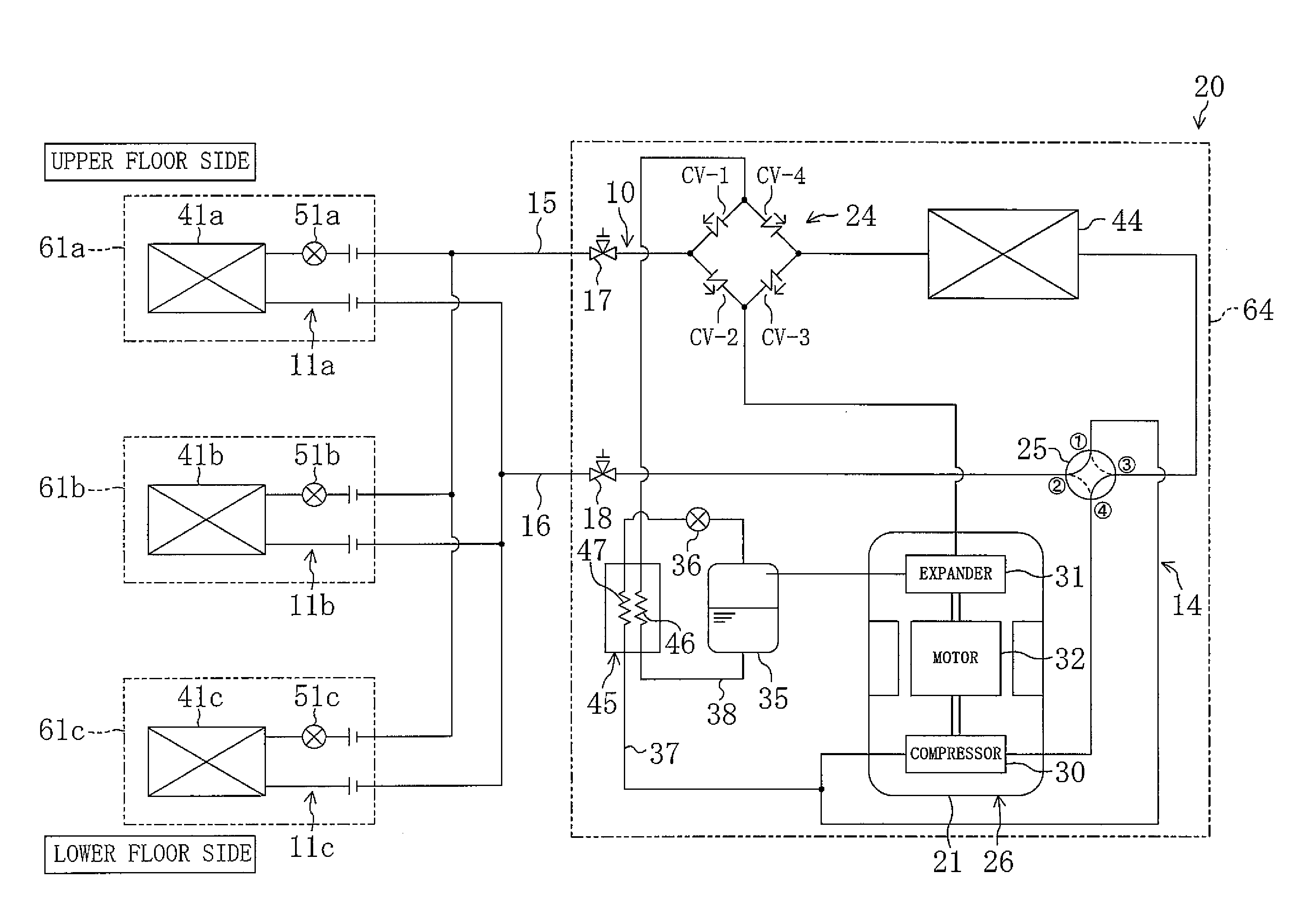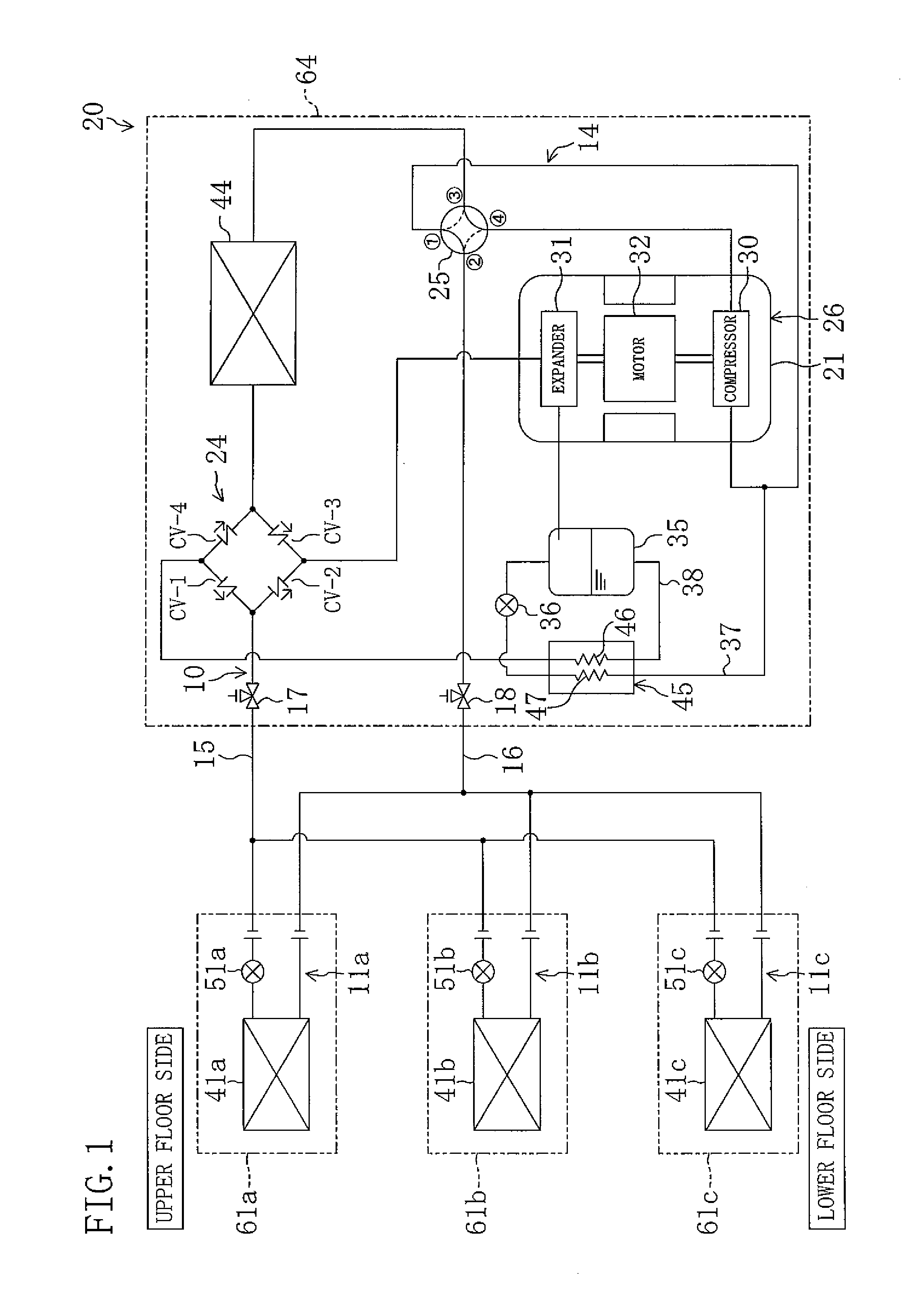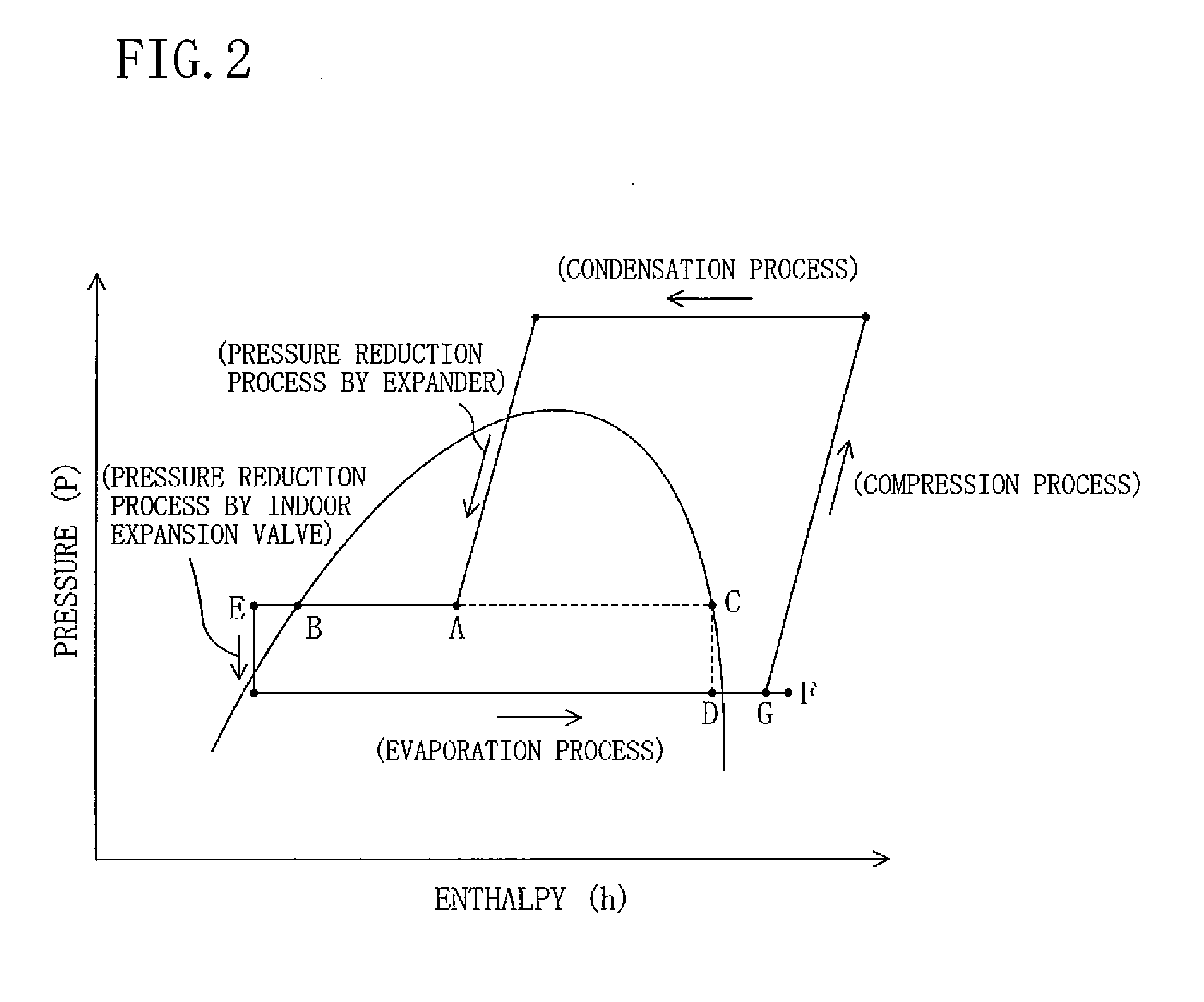Refrigeration system
- Summary
- Abstract
- Description
- Claims
- Application Information
AI Technical Summary
Benefits of technology
Problems solved by technology
Method used
Image
Examples
first embodiment
of the Invention
[0068]The following is a description of a first embodiment of the present invention. An air conditioner (20) of the first embodiment is formed by a refrigeration system (20) according to the invention. As shown in FIG. 1, the air conditioner (20) is provided with a single outdoor unit (64) and three indoor units (61a, 61b, 61c). The number of the indoor units (61a, 61b, 61c) shown here is merely exemplary.
[0069]These three indoor units (61a, 61b, 61c) are respectively, a first indoor unit (61a), a second indoor unit (61b) and a third indoor unit (61c). These three indoor units (61a, 61b, 61c) are installed on different floors in a building, wherein the first indoor unit (61a), the second indoor unit (61b) and the third indoor unit (61c) are installed, respectively, on an upper level floor, on an intermediate level floor, and on a lower level floor. The outdoor unit (64) is installed on the lowermost level floor of the building.
[0070]The air conditioner (20) of the fi...
second embodiment
of the Invention
[0114]An air conditioner (20) of a second embodiment of the invention is formed by a refrigeration system (20) according to the invention, as in the first embodiment. Hereinafter, the difference of the second embodiment from the first embodiment will be described.
[0115]As seen from FIG. 6, the gas-liquid separator (35) is not disposed in the outdoor circuit (14) of the second embodiment. In the outdoor circuit (14), the outflow side of the expander (31) is connected, through cooling piping (49) that passes through the internal heat exchanger (28) serving as a subcooling heat exchanger, to the bridge circuit (24).
[0116]One end of the injection pipe (42) is connected, upstream of the internal heat exchanger (28), to the cooling piping (49). The other end of the injection pipe (42) is connected to the suction side of the compressor (30). The injection pipe (42) is provided with a return refrigerant expansion valve (55) which is a return refrigerant pressure reducing mec...
first modification
[0121]With respect to the foregoing embodiments, it may be arranged that there is mounted between the outdoor heat exchanger (44) and the bridge circuit (24) an outdoor expansion valve (43) whose degree of opening is variable, as shown in FIG. 8. In the air conditioner (20) of the first modification, the outdoor expansion valve (43) is fully opened during the space cooling operation. On the other hand, in the space heating operation, the degree of opening of the outdoor expansion valve (43) is adjusted in order to control the degree of superheat of the refrigerant heading to the compressor (30).
PUM
 Login to view more
Login to view more Abstract
Description
Claims
Application Information
 Login to view more
Login to view more - R&D Engineer
- R&D Manager
- IP Professional
- Industry Leading Data Capabilities
- Powerful AI technology
- Patent DNA Extraction
Browse by: Latest US Patents, China's latest patents, Technical Efficacy Thesaurus, Application Domain, Technology Topic.
© 2024 PatSnap. All rights reserved.Legal|Privacy policy|Modern Slavery Act Transparency Statement|Sitemap



